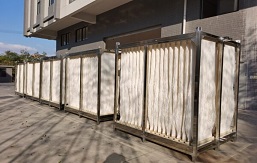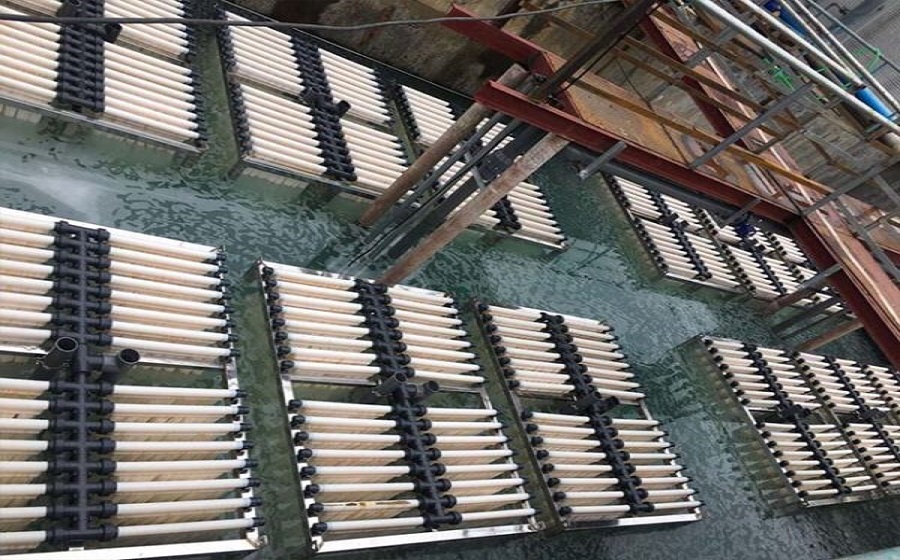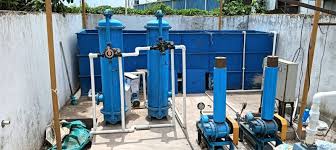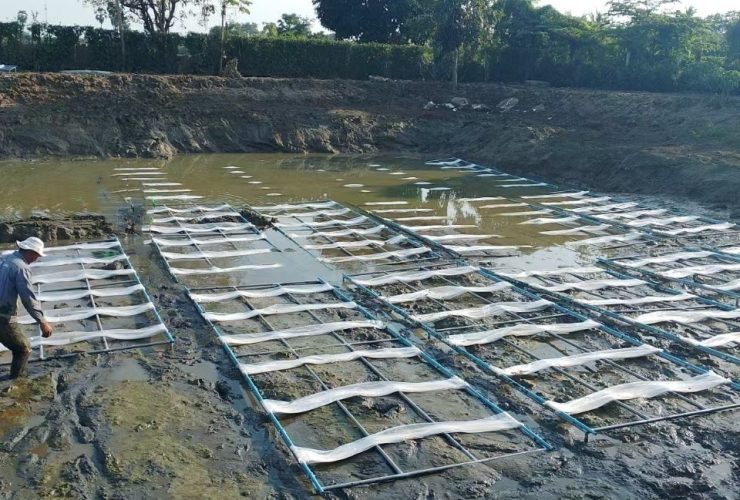Wastewater Treatment VS Sewage Treatment: Key Differences, Benefits, and Modern Solutions
The risk of safety to handle wastewater has escalated because of population and industry increases. Yet, one of the most common misunderstandings in this space remains the confusion between wastewater treatment and sewage treatment.
They are both important toward a healthy environment but there is a great difference in purpose, processes of doing so and use.
In this guide, we’ll explore the full scope of Wastewater Treatment VS Sewage Treatment—what makes them unique, how they work, and when to use each system. You will find out how such advanced solutions as MBR (Membrane Bioreactor) technology are transforming our thinking about the efficiency of the treatment.
What Is Wastewater Treatment?
Wastewater treatment refers to the process of purifying water that has been affected by industrial, commercial, or agricultural use. It incorporates all water that has been polluted by humans in one way or another either by a factory, food industries and even storm drains.
The primary goal is to remove:
- Chemical contaminants
- Heavy metals
- Oils and grease
- Organic matter
- Pathogens
This treated water could also be released safely into the environment or utilized to some other non-drinking operations.
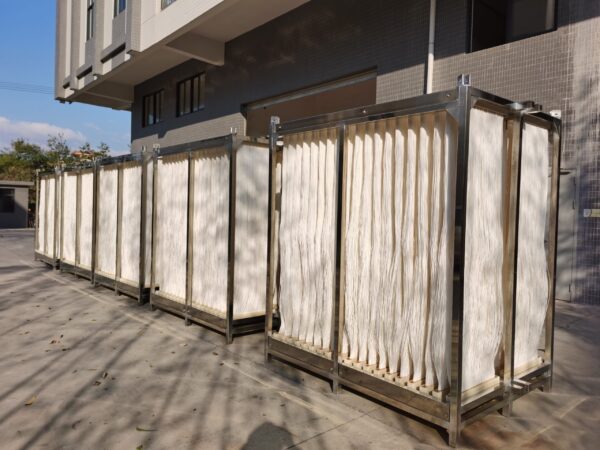
What Is Sewage Treatment?
Sewage treatment is a subset of wastewater treatment, focused specifically on domestic wastewater from households and municipalities.
Sewage usually contains:
- Human waste
- Detergents
- Kitchen and bathroom discharge
- Soap and food residue
The focal point is herein to cut down organic wastes and microbial conditions to safe limits prior to releasing or recirculating the water. It is carried out in a dedicated sewage treatment plant, which varies in size depending on the population it serves.
Wastewater Treatment VS Sewage Treatment: Core Differences
The differences between the two forms of treatment are not merely academic: plant design, operational efficiency and compliance all depend upon them.
1. Type of Water Treated
- Wastewater includes all types: industrial, agricultural, stormwater, and domestic.
- Sewage is strictly domestic—originating from homes, offices, and public buildings.
2. Pollutant Load
- Wastewater may contain hazardous chemicals, requiring advanced treatment.
- Sewage primarily holds organic matter and pathogens.
3. Complexity of Treatment
- Wastewater treatment often demands multi-stage processes, sometimes involving membrane technologies or chemical oxidation.
- Sewage treatment generally follows biological treatment, often through activated sludge or biofilm processes.
4. Application and Setup
- A wastewater treatment plant is typically installed at an industrial site and customized based on waste load.
- A sewage treatment plant is usually found in residential complexes, towns, or municipalities.
Benefits and Advantages of Wastewater Treatment
Investing in a wastewater treatment plant offers more than just regulatory compliance—it delivers both economic and environmental value.
1. Environmental Conservation
The waste water that has been treated is also capable of protecting the rivers, lakes and oceans against the contaminants like oils, chemicals and poisonous substances.
2. Water Reuse
Industries are able to re-use treated water in cooling towers, cleaning as well as irrigation which has decreased the reliance on fresh waters.
3. Regulatory Compliance
Strict laws exist with regard to effluent discharge by the government bodies. Advanced treatment guarantees that your facility is not penalized and has to close down.
4. Operational Savings
Industries save on the fees charged by municipalities to dispose of wastewater and minimize their liabilities towards the surrounding environment by treating their own water wastes.
5. CSR and sustainability
Companies with wastewater treatment systems in place are seen as environmentally responsible. It enhances their corporate social responsibility and image before the people.
Benefits and Advantages of Sewage Treatment
Sewage treatment Plant is essential for public health and urban sustainability. It is not only sanitary.
1. Human Protection Health
By removing harmful pathogens, sewage treatment prevents the spread of diseases through contaminated water.
2. Pollution Control
Untreated sewage increases the biological oxygen demand (BOD) of the natural water bodies destroying the aquatic life and causing bad odor.
3. Resource Recovery
Lots of plants reclaim biogas and sludge which could be utilized in the production of energy or farming.
4. Urban water reuse
The treated sewage water may be reused in toilets, gardens or in townships and high rise buildings cooling process.
5. Compact MBR Design
Oxymo solutions: The MBR sewage systems of Oxymo can be placed either in rooftops or basements, which makes them perfect in small spaces.
MBR Technology: A Shared Solution
Membrane Bioreactor (MBR) systems have in recent years proved to be an efficient mode of treatment in both uses. MBR is a hybrid of biological treatment and membrane filtration, and has better effluent quality, reduced footprints and automation. For municipal applications, Oxymo Technology provides reliable MBR sewage treatment plant systems that deliver consistent performance with minimal maintenance.
The MBR waste water treatment plant which is designed by the Oxymo technology is utilized in the industries, which deal with the complex pollutants and designed to achieve the most stringent discharge limits.
Final Thoughts
Understanding the difference between wastewater treatment plant and sewage treatment plant is essential for industries, urban planners, and environmental consultants.
The scope of application/treatment is not same with some of the technologies exhibited in the two systems even though there are similarities in the technologies used. The incompetent selection of the system can lead to the absence of compliance, overspending, inefficient treatment.
With advanced MBR technology now accessible for both, there’s never been a better time to upgrade your system. Oxymo Technology assists customers in all industries to make their water treatment sustainable by using solutions that are industry-specific, low-maintenance and able to satisfy the existing challenges and the future demands.
FAQ’s
Q1. What is the difference between sewage and wastewater?
Ans. Domestic wastewater, specifically household and bathrooms, is known as sewage. Waste water involves sewage along with the industry water, rain run off and agriculture.
Q2. Is it possible to recycle treated wastewater?
Ans. Yes, After being effectively treated, wastewater can be reused in irrigation or industrial cooling or flushing of toilets especially when advanced technologies such as MBR are adopted.
Q3. Why is sewage treatment necessary?
Ans. It aids in safeguarding the health of the people, since it does away with harmful pathogens. It also aids in avoiding pollution of the water bodies and safe urbanization.
Q4. What are the stages of wastewater treatment?
Ans. Its common processes are screening, equalization, biological treatment, enhanced filtration and treatment of sludge. Multiple steps are usually integrated within MBR systems to become more efficient.
Q5. What is an MBR sewage treatment plant?
Ans. An MBR sewage treatment plant uses membranes and biological treatment to produce high-quality, reusable water from domestic sewage. It is small, effective and fits well in the nature of the contemporary urban environment.


